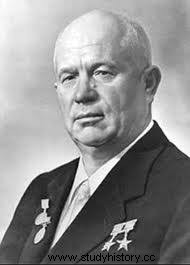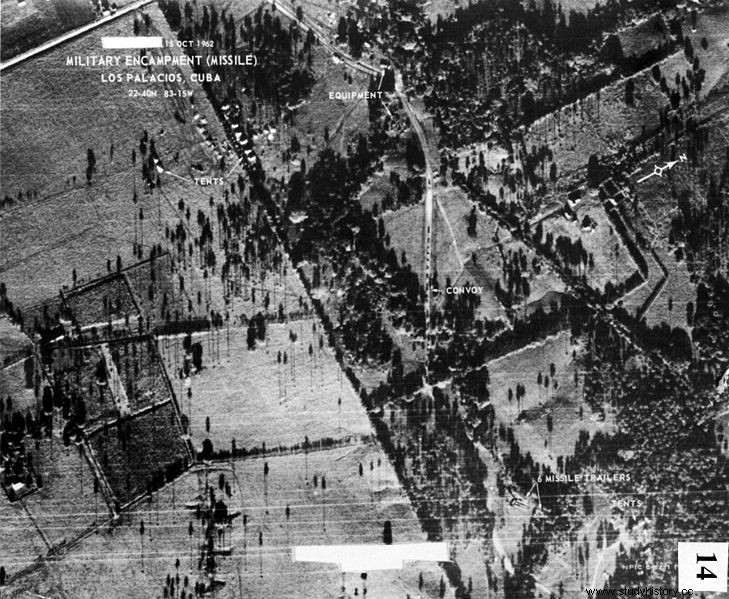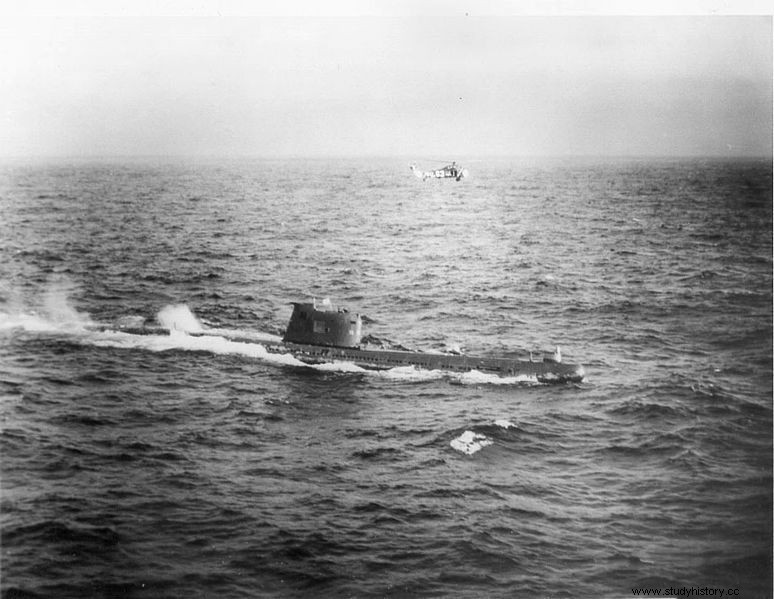In 1962, the Cold War was in full swing. The nuclear arsenal of the US and the USSR would be enough to destroy the Earth 20 times! However, the confrontation did not take place, thanks to the decision of one man ...
The 1960s in America began in a nervous atmosphere. The specter of an atomic attack by the Soviet Union seemed to grow larger and larger. The great fashion for nuclear shelters had started and many citizens were just getting ready for a nuclear war by gathering supplies and practicing rescue procedures.
The situation came to a head when the US government learned about the secret shipment of Soviet nuclear missiles to Cuba. Panic broke out, and even those in power felt a real threat ... This was where the worst almost happened!
Tension escalation
The great powers adopted a strategy of mutual deterrence through a strategically placed arsenal. Therefore, earlier the Americans transported their missiles to Turkey and Italy, very close to the Soviet Union border. In response to such a move, the USSR decided to secretly transfer some warheads to Cuba. Civilian ships were used for this purpose, and US intelligence found out about the venture when it was too late.

Nikita Khrushchev agreed to withdraw the nuclear arsenal from Cuba
Meanwhile, a revolution in Cuba has just ended, after which the communists came to power. For the USSR, it was a unique chance to gain an ally practically located in the American backyard. The nuclear missiles deployed on the island had the potential to destroy Los Angeles, Washington and New York within 30 minutes of giving the order. Even though the Soviet movement was only a response - "if you have your heads in Turkey, we'll move ours to Cuba" - it's hardly surprising that everyone in the United States was simply afraid. In those days, the communication barrier supported by anti-Soviet propaganda led to the fact that Russians were perceived as "the bad", unpredictable people with far too much potential. President Kennedy ordered a military blockade of Cuba to prevent further shipments.
Fortunately, on October 28 of the same year, the situation was somewhat relaxed. Both sides reached an agreement under which Nikita Khrushchev agreed to withdraw the nuclear arsenal from Cuba. In return, the US promised not to attack communist Cuba and to withdraw its nuclear missiles from Turkey and Italy. It seemed that everything ended well ... Although the day before the nuclear war broke out, literally one word was missing!
Secret Mission
Before the Powers' agreement was reached, the Soviets had embarked on a covert mission to further secure waters near Cuba. The four diesel-powered submarines of Brigade 69 departed from the base in the Arctic. Their crews did not know the exact orders:the captains received them in sealed envelopes that they could not open until they had traveled 50 miles.
They weren't sure, though they might have guessed that the "special weapons" mentioned in the letters from command were actually nuclear torpedoes. Only captains Rurik Ketov, Alexei Dubivko, Nikolai Shumkov and Valentin Savitsky knew that each of the boats had one missile equal to a bomb dropped on Hiroshima. The designated target was 19 miles off the coast of North America, in the vicinity of Cuba. There, as ordered, the submarine torpedo boats were to stop. "Comrades. We were assigned to participate in a special mission for the Soviet Union. The 69th long-range submarine brigade will develop transit speed and remain undetected on its way across the Atlantic, then stop near Cuba, "read to crews, and the 7,000-mile voyage later began.

Photo of missile equipment in Cuba, taken from the deck of the U-2 on October 14, 1962
The US, however, expected such moves from the USSR. Near Cuba, under the blockade established by Kennedy, a special force was stationed mainly for intercepting submarines. They included destroyers, helicopters and reconnaissance planes, on which the American government spent exorbitant sums of money. It is very likely that these forces were the most technologically advanced military unit at the time.
Warning shot
The B-59, a submarine of the 69th brigade, was spotted. On October 27, the Americans dropped depth charges near her to force her to surface and identify. Vitalij Sawicki, the captain of the B-59, saw the move as an attack. According to the recollections of one of the crew members, the leader was then said to have said:“Now we will hit them harder. We will die ourselves, but we will drown them all. We will not allow the honor of the Soviet navy to be stained! ”. Ordered the torpedo preparation.
Rodrick Braithwaite describes this in "Armageddon and Paranoia":
The captains' briefing on the eve of their departure was led by Admiral Vitaly Fokin, first deputy commander of the Soviet fleet, and Admiral Anatoly Rassocho, Chief of Staff of the Northern Fleet. Rassocho was to tell the captains that they were authorized to use their nuclear torpedoes under three conditions:if they were attacked by depth mines, their ships would be seriously damaged, if they were fired upon when surfaced, and if given specific orders from Moscow.
To launch the missile, however, the unanimous consent of the captain, political officer and Vice-Admiral Vasily Archipov was needed. At that moment, the conditions on the ship were terrible. The sailors had to make a critical decision in temperatures over 50 degrees Celsius, stuffiness and low oxygen levels. The battery power was running out, and communication with Moscow was impossible due to immersion. The Americans fired on the vicinity of the B-59 with warning charges ... "When the aircraft carrier Randolph and the ships escorting him began to drop grenades on his submarine, Sawicki fell into a passion." - we read further in "Armageddon and Paranoia".

October 28–29, 1962; Soviet B-59 forced to surface
Under pressure, Captain Sawicki and the political officer decided to launch the torpedo. Only Archipov refused, arguing that - quite rightly the rest - of the risk of triggering a global conflict on the basis of incomplete information. He managed to calm Sawicki. The Soviets surfaced the ship and identified themselves.
The silent hero
Vasily Archipov returned to his homeland, where instead of praise for showing inhuman peace awaited him ... reprimand . He was criticized, as well as the entire crew of the B-59, for being insubordinate and for letting US forces discover the ship. One of the Soviet admirals was even said to have said: "It would be better if you sank with your ship instead."
The Vice Admiral, who basically saved the world from a nuclear war, was an inherently calm and serene man. His wife later described him in interviews as always having an interesting life and open to the world. Wherever he went, he always tried to find the local newspaper and read the latest news. He was also very superstitious - so much so that one day he burned the letters he and his wife were sending to him because he thought it might be bad luck to keep them.
Recognition of merit came only in 2002 thanks to the stories of a certain retired Soviet commander, Vadim Pawłowicz Orlov . It was only then that mankind realized that the outbreak of nuclear war was in fact hanging in the balance. As Arhur M. Schlesinger Jr, adviser to President Kennedy said, It was not only the most dangerous moment of the Cold War. It was the most dangerous moment in human history ” .
Archipov died of cancer on August 19, 1998. Probably the disease was caused by an accident on the K-19 submarine in which the admiral took part; he then received large doses of radiation. In 2017, the Archipov family received the world's first "Future of Life Award" for selfless participation in saving human life. In the following years, it was also awarded to Stanisław Pietrow and Dr. Matthew Meselson.
